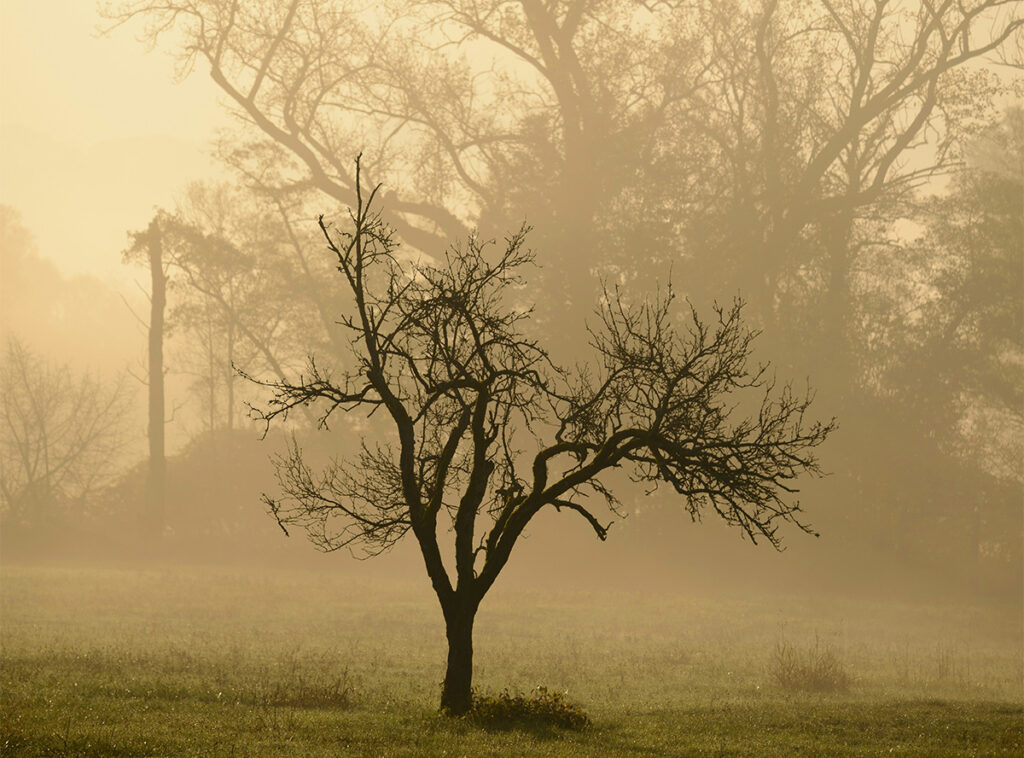Well, before we answer that, let’s just clarify that we’re not talking about some strange mythical cross between tree and monster. So, when it comes to real trees, the answer is yes, you should be mildly afraid of them. The important issue is that a zombie tree may be unsafe, in danger of toppling over in a wind storm.

First off, though, let’s clarify the term. Zombie trees describe trees that appear to be alive but are, in fact, dead or dying. These trees often look healthy from a distance, with full leaves or a seemingly strong trunk, but they are structurally compromised or suffering from severe disease, pest infestation or environmental stress.
The concept of zombie trees typically comes up in the context of ecological discussions about forest health, especially when trees have been affected by issues like such as root decay or disease, pest infestation or drought or environmental stress.
The first step in dealing with a zombie tree is recognizing the signs of one. If you’re concerned about a tree in your yard, look out for:
Yellowing or Browning Leaves: Leaves may become discolored or exhibit spots of yellowing, even if the tree seems to have a full canopy. This could be a sign of poor nutrient uptake or water stress.
Premature Leaf Drop: A tree shedding leaves earlier than usual, or not putting out new leaves in the spring, could indicate internal damage.
Stunted Growth or Poor Canopy Development: If a tree looks like it should be growing taller or thicker but its growth has slowed dramatically, it could be struggling below the surface. Reduced growth or lack of new shoots can be a sign of root rot, disease or pest damage.
Dead or Dying Branches: Look for branches that are dry, brittle or have no leaves. Even if other parts of the tree seem healthy, the presence of dead or dying branches is a red flag. Dieback, another indicator, is a gradual loss of branches from the top down or from the outer edges inward.
Fungal Growth or Mushrooms Around the Base: Fungi such as mushrooms or conks growing on the trunk or at the base of the tree are often signs of rot, either in the roots or trunk. These are often caused by root decay fungi or wood-rotting diseases.
Loose or Peeling Bark: If bark is falling off in large patches or there are visible cracks and fissures, it may indicate that the tree is struggling with internal decay or pest infestation.
Sap or Oozing: Excessive sap flow or sticky substances on the bark may indicate an insect infestation or disease.
Bark Beetles or Other Insects: Small holes in the bark or visible insects, like bark beetles or borers, are often signs of tree stress. These pests feed on the inner wood and weaken the tree over time.
Worm Holes or Galleries: Look for exit holes or tunnels under the bark; these can indicate that pests are feeding on the tree’s wood.
Hollow or Soft Areas in the Trunk: If the trunk feels soft or hollow when you tap it, or if it shows signs of internal rot, the tree may be structurally compromised, even though it looks fine from the outside.
Can You Save A Zombie Tree?
Whether or not a zombie tree can be saved depends on the extent of the damage and the underlying cause of its decline. In some cases, with the right interventions, a tree can recover or at least be stabilized to prevent further damage. However, in other cases, the tree may be too far gone to save. The steps that you need to take if a zombie tree can be saved include:
- Pruning and Cleaning
- Improving Soil and Water Management
- Addressing Fungal or Bacterial Infections
- Controlling Pests
- Professional Help
If you’re unsure about the cause of the tree’s decline or how to treat it, consulting with a certified arborist is crucial. As certified and licensed arborists, we can diagnose the problem, determine whether the tree can be saved and suggest the best treatments or interventions.
We can also assess whether the tree is structurally safe. If the zombie tree is too far gone — for example, if the roots are rotten, there’s severe decay in the trunk, or pests and diseases are rampant — removal may be the safest and most practical option. A falling tree can be a danger to surrounding structures and people — and really cause you insurance headaches if nothing else. If you’re in doubt, call us today.

